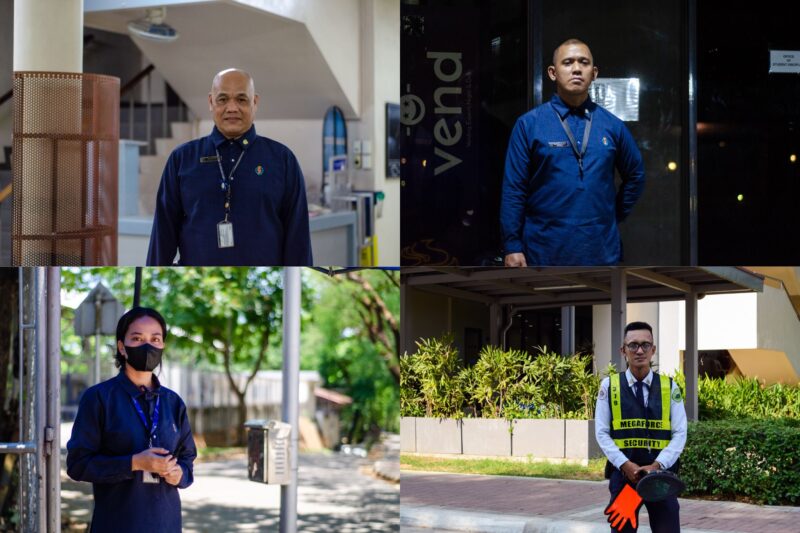Just like superheroes, Catholic saints and Biblical figures have strived to fight against evil, and to protect those in need. Yet why is it that when both come onto the silver screen, Filipinos would rather stay shy of the religious fare?
Picture a superhero infiltrating a villain’s lair, knowing that he must defeat him and destroy his nefarious plans, in order to save the city. In the process, he must face his deepest sins, failures, and regrets to become capable of saving the world. Now picture a man gifted with superhuman strength by God Himself, slaying lions with his bare hands and defeating armies with the jawbone of an ass, all in a time when Israel had fallen under the Philistines.
Picture that man who, having broken his oath to God, is captured, punished, has his sight taken from him, and is given one last chance to bring retribution to the Philistines: By using his God-given strength to destroy a temple, crushing the Philistines with him.
Both are full of action, while playing on the theme of redemption. There seems to only slight differences and yet, it seems that Filipinos are somewhat lukewarm to anything deemed religious, and perhaps—to some degree—even consider it boring. Yet, at the same time, they gobble up Hollywood superhero content.
The quest for entertainment
Often, the very roots of comic book characters make for riveting superhero movies. Take for example, Batman, one of the most popular superheroes. Despite his complete lack of “super” powers, his desire to save Gotham from the crime that deeply infests it is one of the biggest reasons why he appeals to so many people. Batman franchise films like the Dark Knight Trilogy made millions, leading the modern day Marvel and DC superhero movies to start finding their footing and become wild successes. Superhero movies have enraptured the youth today, especially here in the Philippines.
Viewers get to see moral paragons or, at the very least, strong people willing to fight for what is good and bring about a better world with their incredible capabilities. But then comes a religious film with arguably just the same themes: A former soldier and a changed sinner on a hero’s journey across many lands to perfect his method of spirituality to bring about change unto the Christian world and save it from falling into apathy and evil. Yet, it barely makes a splash in the minds of our fellow Filipino viewers who seem to have latched on the most recent and future releases of comic companies and big-time movie studios.
Pauline Mangilog-Saltarin, co-producer of Ignacio de Loyola (2016), mentions how “[viewers] don’t want to watch [religious films] kasi it’s too preachy, so they’d rather watch something mababaw para ma-entertain sila.” She also adds, “We don’t have as much marketing budget as the bigger films.”
It is possible that a combination of the reputation of religious films, along with the fact that Filipino-made films have far less funding to work with is the reason why Filipinos would rather flock to what has been tried and tested: Hollywood-made superhero movies whose main characters people have looked up to more than any saint nowadays.
Through a different lens
A soldier, a sinner, and a saint. Ignacio de Loyola or Iñigo—as he is called in the movie—was a soldier who believed that a man should have “a nation to fight for, a king to serve, and a lady to protect.” Despite his prowess as a knight, Iñigo was crippled due to a battle injury. To occupy his time, he started reading books on the lives of saints and could not help but be impressed with them for the bravery and tenacity they had shown. This then prompted Iñigo to follow in their footsteps.
Throughout the film, redemption serves as the central theme. Hand in hand with this is the notion of repentance. To redeem himself from the wrongdoings he had done, Iñigo isolated himself for months and lived inside a cavern with only his writing journal, a whip, and the thoughts in his head for company. After all this hardship however, Iñigo eventually finds a sense of peace after overcoming the largest obstacle he had faced in his life.
The narrative of redemption, repentance, and the hero’s journey can be observed in recent superhero films, with prime examples being the DC and Marvel movie releases. Yet, it seems that many Filipinos would rather prefer watching superhero movies rather than those with religious themes.
Communication Department Associate Professor Nicasio D. Cruz, SJ, also a member of the Movie and Television Review and Classification Board says, “[The Filipino audience] want[s] to watch a film that will be entertaining and escapist in nature to forget the work [that they’ve] done. And a movie that is reflective and soul-searching, is not the type of [film Filipinos would prefer since] they look at [watching] films as a form of entertainment.”
With the already hectic work lifestyle some Filipinos have, it’s only reasonable that we choose rest over reflection and this transcends even to our preference of films. Many would arguably watch a film with a moderately shallow plot line and superb computer-generated imagery than a film that prods one to think, which can be arguably just as tiring as any physical activity because of the sheer effort it takes.
A shift from expectations
Filipino-made films featuring our very own national heroes such as Heneral Luna (2015) also show a similar plot to that of the superhero narrative of redemption and repentance. And yet Heneral Luna has won more accolades than Ignacio de Loyola ever did. Heneral Luna is a historical film that features a lot of explosive action scenes and dry humor. On the other hand, Ignacio de Loyola is a religious film far more soul-searching and reflective compared to an action or comedic film.
The difference is, as Cruz says, “You don’t have a character in Heneral Luna having that illumination during a moment of contemplation as compared to Ignacio de Loyola.” Furthermore, Mangilog-Saltarin adds that, “[The two are only similar] in [the aspect of] finding a hero or being a film about wanting to become a hero.”
The lack of interest in films categorized as religious ones, adds Cruz, is because “we are all nominal Catholics, [meaning only] Catholic in name.” Mangilog-Saltarin dissents from this view however, saying that “Here in the Philippines there’s a good mix of people who want to see movies like Ignacio de Loyola.” She adds that they’ve gone as far as five weeks in terms of the film’s showing in certain theaters, despite being an indie film with no major backing.
Although it may seem that Filipinos have a tendency to retract from films that can be labeled as religious, the attention garnered by Ignacio de Loyola, a religious indie film, continues to prove otherwise. It may be a while before films like these gain traction in the Philippines or anywhere abroad for that matter, but regardless of our devotion as Catholics, one thing is certain: We can always find a superhero in our saints.







